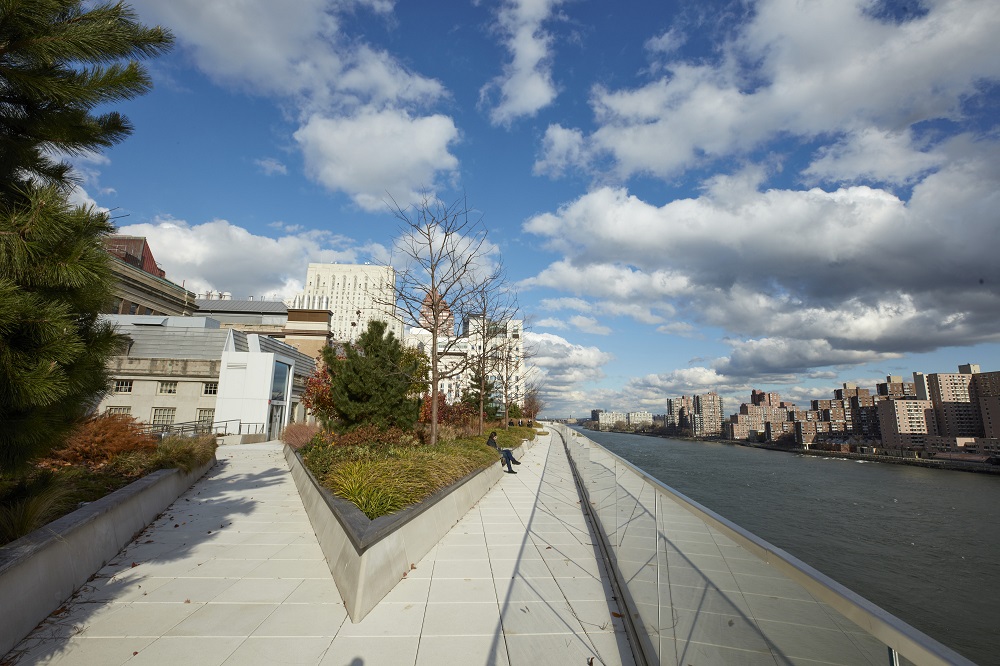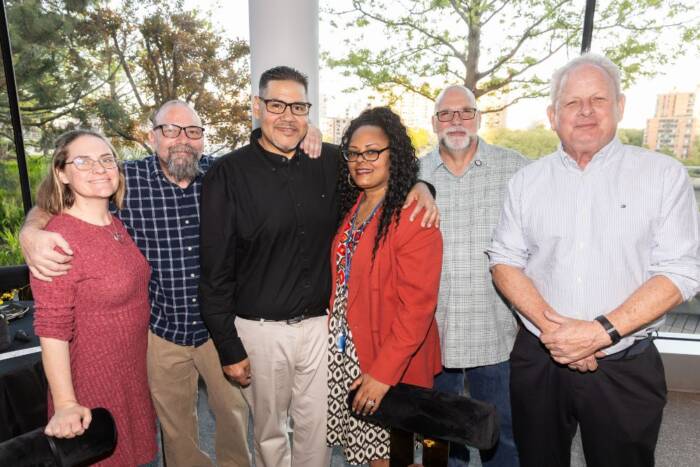Stavros Niarchos Foundation–David Rockefeller River Campus receives LEED gold certification

Decisions made during the design and construction of a building—from the materials used to the placement of windows to mechanical systems selected—dictate the impact it will have on the environment for decades to come. For the Stavros Niarchos Foundation-David Rockefeller River Campus, a commitment to making choices in the interest of sustainability has led to the building being certified LEED Gold by the U.S. Green Building Council. The LEED designation, for Leadership in Energy and Environmental Design, is awarded to buildings that incorporate environmentally friendly features and follow sustainable construction practices.
Although previous buildings on campus including the Collaborative Research Center and Welch Hall have received LEED designation, this is the first time a Rockefeller laboratory building has achieved gold. And the river campus, which opened in 2019, is one of only a handful of laboratory buildings in New York City to receive LEED certification at any level.
LEED certification follows a rubric of criteria in areas of sustainable site development, water savings, energy efficiency, materials selection, and indoor environmental quality. Credits are awarded based on contributions to overall sustainability; 60 to 79 credits are required for gold. Rockefeller’s river campus received 63 credits.
“Reaching this level of accreditation is a significant achievement, especially in an urban setting where we lack the space needed to implement many features,” says Alex Kogan, Rockefeller’s associate vice president of plant operations. He first submitted Rockefeller’s LEED application in 2015 along with detailed design plans.
“Our goal was always to build one of the most efficient laboratory buildings anywhere, and the environmental benefits incorporated into the building’s design will save energy and reduce emissions throughout its lifetime,” says George Candler, Rockefeller’s associate vice president of planning and construction.
Among the environmentally friendly initiatives incorporated into the construction process: 91 percent of construction waste was diverted from landfills and recycled by vetted subcontractors; 29 percent of building supplies were manufactured using recycled materials and 36 percent were sourced locally; 88 percent of wood-based building materials used were certified by the Forest Stewardship Council (FSC), an international non-profit that promotes responsible management of the world’s forests.
The campus’ green roof, designed to reduce heat absorption and counter the heat island effect prevalent in urban settings, is its most prominent green design feature. But LEED certification also considers the indoor environment. All paint, flooring and carpeting, and sealants to protect against rain and snow, have low VOC emissions.
“Ensuring the sustainability of this project and in turn receiving this certification took a village,” says Kogan. “Rockefeller was committed to the extra steps involved in the process, and we received enthusiastic support from our contractor and subcontractor partners.”
Early this spring, decals stating this new certification will be placed at entrances across the river campus.


